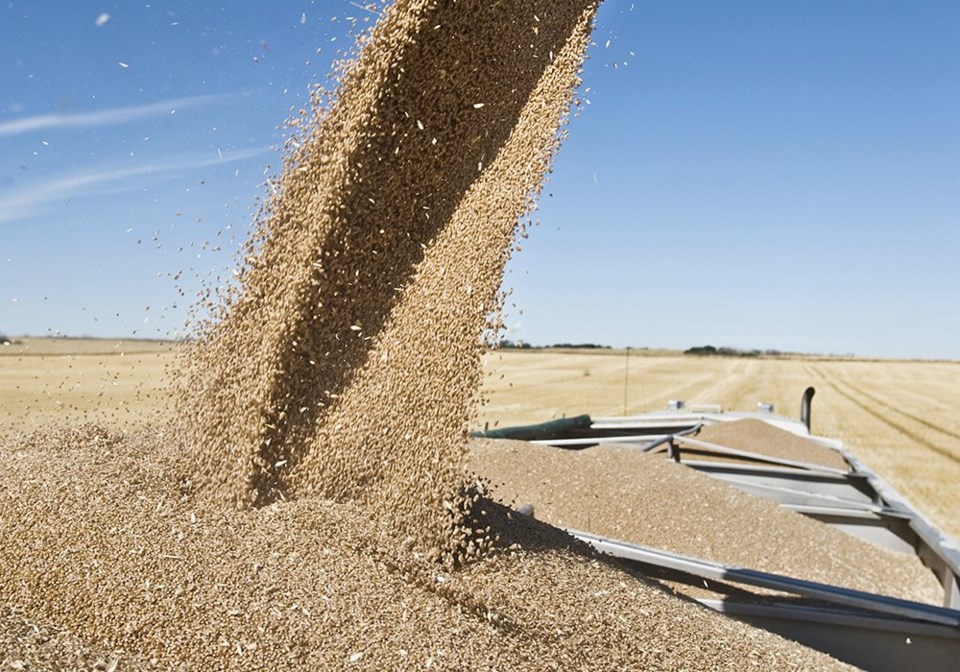WESTERN PRODUCER — The biggest factor affecting grain markets today is the uncertainty surrounding Ukraine’s grain corridor, says an analyst.
The United Nations-brokered Black Sea Grain Initiative expires May 18 and there are mounting concerns it may not be renewed.
Even under the current agreement, the corridor is not being used to its full capabilities because of Russia slowing the pace of inspections.
Only six grain vessels left the corridor during the last week of April, compared to a peak of 55 during one week in September 2022.
Jade Delafraye, global editor for agriculture with Argus Media, put her mind to what would happen under the worst-case scenario, where the corridor was closed through the end of the 2023-24 crop year.
Most of Ukraine’s wheat and corn are shipped to foreign markets through the corridor.
For wheat, there would be no concerns for the remainder of the 2022-23 campaign because of ample supplies in Russia, Canada, Australia, Romania and Bulgaria.
It’s a similar outlook for 2023-24.
“In the worst-case scenario, the world would stand to lose about 10 million tonnes of wheat exports from Ukraine,” she said during a recent Argus webinar.
However, wheat crop prospects in the northern hemisphere look good, with the notable exception of the U.S. winter wheat crop.
Delafraye believes Russia could export 49 million tonnes of wheat, up from the 45 million tonnes it would ship if Ukraine was still in the market.
The European Union’s exports would bump up to 39 million tonnes from 36 million, and Australia’s would rise to 22 million tonnes from 20 million.
A similar scenario would unfold for corn, where Ukraine would lose about 17 million tonnes of exports.
U.S. growers are expected to plant a whopping 92 million acres of the crop, and the pace of planting has been ideal so far.
She believes the U.S. could ship 64 million tonnes of corn in 2023-24, instead of the 54 million tonnes if Ukraine was able to use the corridor.
Brazil is set to harvest a record corn crop and could boost its sales to 59 million tonnes from 55 million. Even Argentina could squeak out an additional one million tonnes from its drought-ravaged harvest.
“Although obviously the loss of Ukraine’s volumes would be felt and could have an impact on prices, overall, our expectation is the world would be able to compensate,” said Delafraye.
The analysis becomes a little more complicated on the oilseed side.
Ukraine used to account for nearly half of the world’s sunflower oil exports. That is expected to fall to about one-third in 2022-23.
“Previously, Ukraine crushed the vast majority of its sunflower seeds and exported sunflower oil by sea,” she said.
“But as sea exports were blocked for a few months, it was much easier to export seeds instead of oil by land.”
Sunflower seed exports to the neighbouring countries of Bulgaria, Hungary, Poland, Romania and Slovakia went from nothing pre-war to between 150,000 and 300,000 tonnes per month.
Sunflower oil exports from those five European Union countries simultaneously exploded from about 80,000 tonnes per month to double that amount in many months in 2022.
However, farmers in those countries are upset about the flood of Ukrainian grains and oilseeds crossing their borders because it is depressing prices for the crops they grow.
In response, the European Union has instituted a temporary ban on the import of Ukrainian wheat, corn, sunflower seeds and canola to those five countries through June 5, 2023, and is considering extending it until the end of the year.
That ban could result in reduced crush utilization in the five EU countries. But for the time being, the EU is flooded with vegetable oil, so sunflower oil prices have been dropping despite the ban.
If the ban is extended, Ukraine might increase its own crush activity. But then there would be the uncertainty of how to get its oil to market, given the tenuous grain corridor agreement.
On the supply side, Delafraye said Ukraine’s winter wheat and barley acres are much below last year’s levels. The exception is its winter canola crop.
APK-Inform is forecasting a record 3.5 to 3.6 million tonnes of canola production in 2023. Exports are expected to be about 3.3 to 3.4 million tonnes.
However, that export forecast is “optimistic” because 55 percent of the 2022-23 canola export program has been sent to the five countries where the EU ban is in place.
Delafraye said Ukraine’s spring seeding is underway and the pace of corn and barley planting is below previous years because of persistent rains, the loss of some territory to Russia and the lingering uncertainty over exports.

